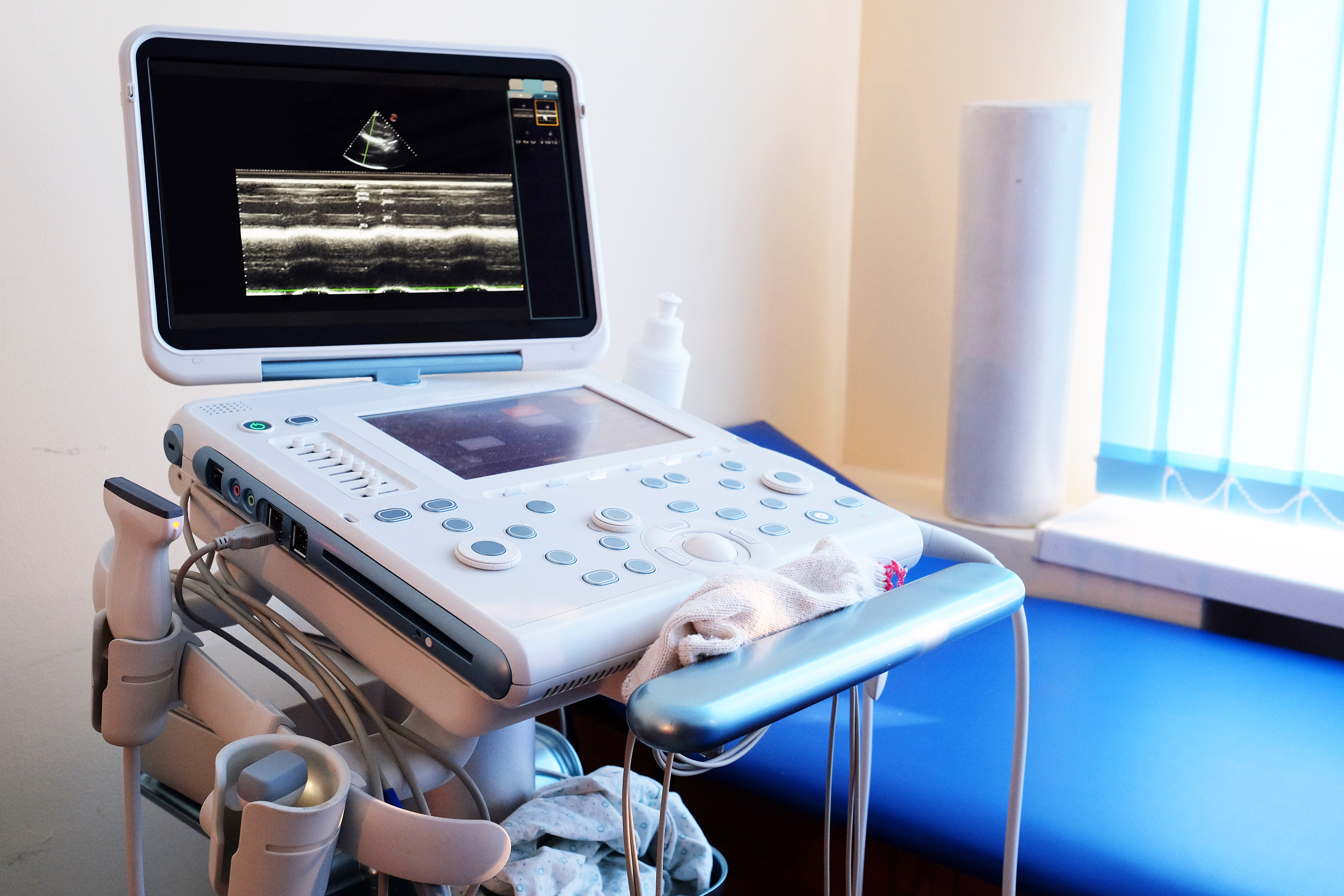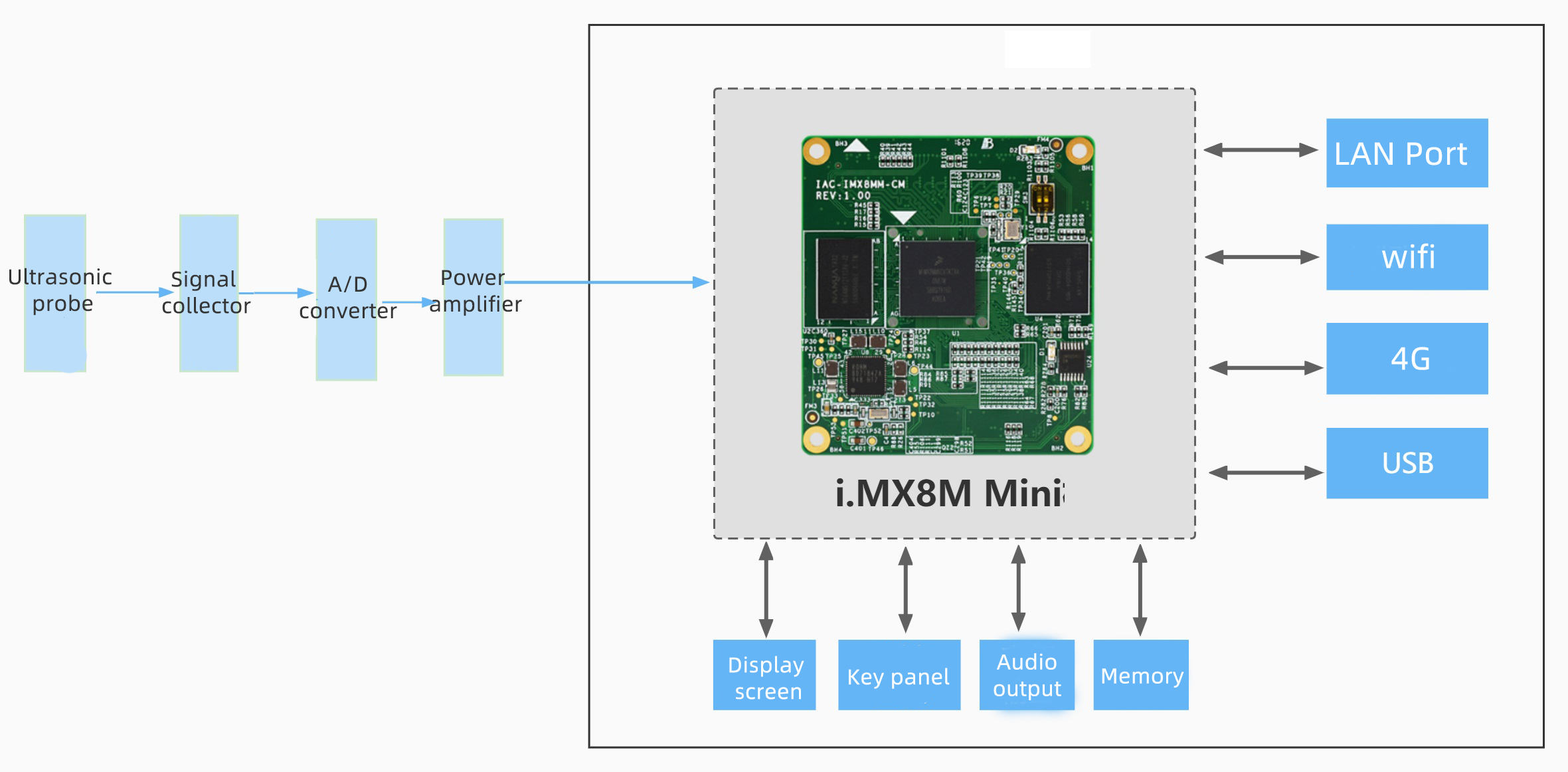Qi Yang proposed ultrasonic diagnosis solution based on i.MX8M Mini. Ultrasonic diagnostic instrument, also known as ultrasonic medical imaging equipment, is an instrument that uses the reflection, refraction and diffraction of ultrasound to probe the internal structure of the human body. Due to the non-invasive, non-invasive, economical and practical features of ultrasound diagnosis and wide range of applications, ultrasound diagnostic instruments have also become one of the commonly used medical devices in the medical field at present.

Ultrasonic Diagnostic Instrument
Ultrasonic diagnostic instrument mainly consists of the device host, ultrasonic probe(transducer) and peripheral equipment. The ultrasound probe is a key component of ultrasound imaging equipment, whose task is to convert electronic signals into ultrasound information or to convert ultrasound signals to electronic signals. The host part mainly receives the electronic signals transmitted by the probe and stores, processes, analyzes and display them on the display; peripheral devices include printers, foot pedals, etc.
When the host part works, the ultrasonic probe transmits the received signal to the pre-amplification circuit, and after amplification, the analog signal is convert to digital signal through A/D conversion circuit, then through the synthesis processing of digital circuit and digital scan converter,and finally the processed image video is displayed on the display. The host involves signal processing, encryption processing, signal transmission, power supply, etc. In terms of hardware, ARM processor can be used as the system core to complete timing control, launch driver, signal extraction, data transmission control. NXP i.MX8M Mini processor has high processing capability, 2D 3D built-in gas pedal, rich interface resources, which can replace FPGA and ASIC for medical ultrasound equipment solutions.
Hardware solutions based on i.MX8M Mini for ultrasound diagnostic equipment
Ultrasonic diagnostic instrument host core ARM processor recommended QiYang IAC-IMX8MM-CM core board, based on NXP i.MX8M Mini high-performance processor, quad-core Cortex-A53 and single-core Cortex-M4, running at up to 1.8 GHz, combining advanced processing power with excellent audio, video and graphics for IoT, medical, industrial control, and more.

I.MX8MM Mini integrated 2D, 3D, GPU graphics gas pedal, support image algorithms for image noise reduction, compression, enhancement, edge detection and other processing analysis, support 1080P60 H.26 and VP9 decoding capabilities and 1080P60 H.264 and VP8 encoding, MIPI display interface to support high-definition display screen, help medical imaging equipment to present clear images;
The core board provides rich communication interfaces, including Gigabit LAN port, UART, USB, CAN and other interfaces to support the development of medical device functions and the connection of various peripherals such as printers, and supports Wi-Fi, 3G/4G wireless communication to connect to computers or systems to meet the needs of efficient data transmission.
Medical devices focus on stable work and safety in power supply design. Medical power supplies have insulation requirements, leakage current requirements, and residual voltage requirements, requiring more stable voltage output, lower failure rate, and stronger anti-interference capability. Qiyang i.MX8M Mini core board adopts highly integrated, highly reliable power management chip with built-in multiple protection circuits to ensure the stable operation of the equipment system.
Hardware can be used industrial grade components, electromagnetic compatibility performance testing and anti-interference testing such as static electricity, drop and vibration to meet the requirements of medical equipment for electrical safety.
High-performance, low-power ARM processors and long lead times, effectively reducing solution costs and extending equipment life.
Supports Linux and Android operating systems for easy software development.
With the development of the ultrasound equipment market, equipment applications are becoming more and more widespread, and ultrasound imaging equipment is evolving toward portable and mobile, with portable ultrasound equipment providing convenience for emergency medical treatment and graded diagnosis.



